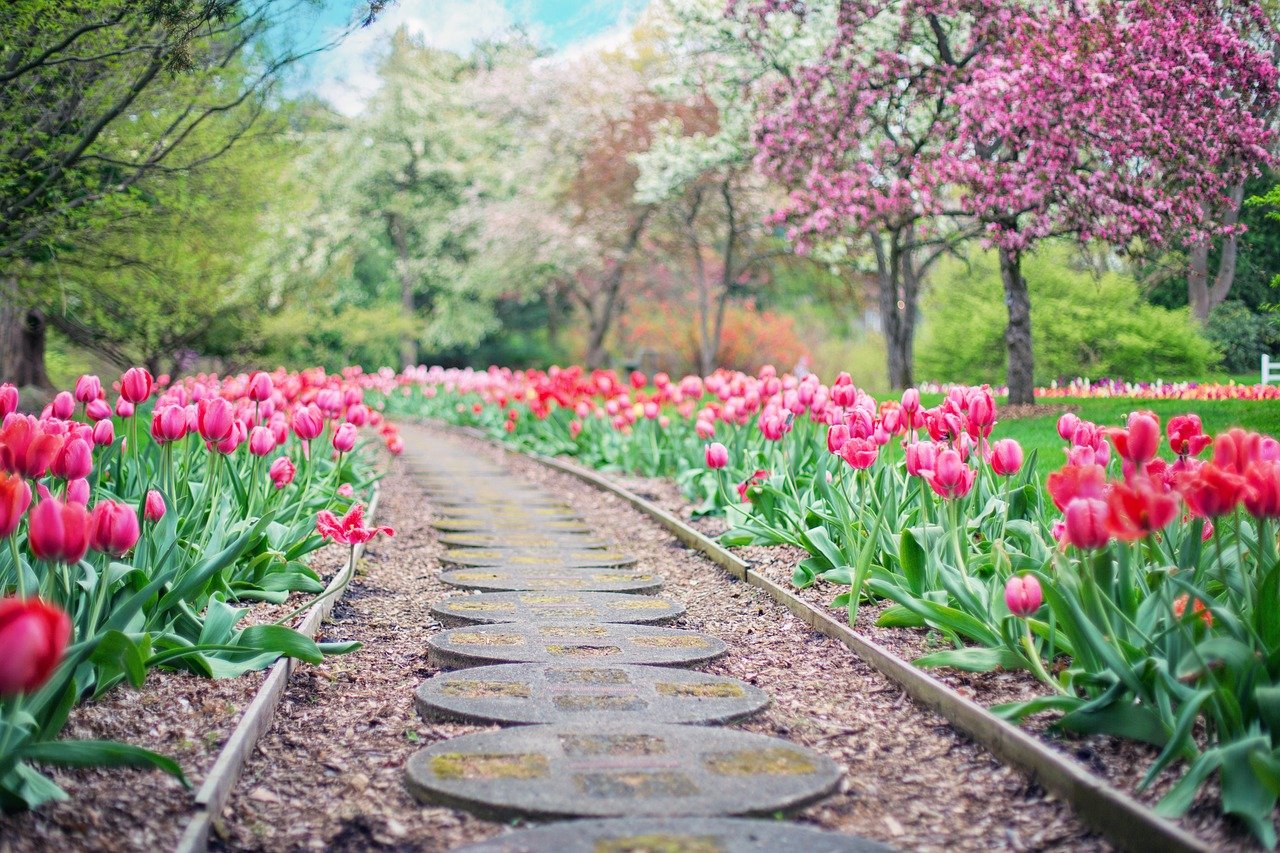
Are you interested in growing your own plants but don’t have a large yard or garden space? Look no further than container gardening! This beginner’s guide will walk you through the basics of container gardening, helping you discover how to create a thriving garden in even the smallest of spaces. Whether you’re a city dweller or simply looking for a convenient way to grow your favorite plants, container gardening is the perfect solution. With the help of a container gardening chart, you’ll be able to choose the right plants, select the perfect containers, and create a beautiful and bountiful garden right at your fingertips.
Choosing the Right Containers
When it comes to container gardening, choosing the right containers is essential for the success of your plants. There are a few factors to consider when selecting containers: the size and material of the container, proper drainage, sufficient depth, and suitable aesthetics.
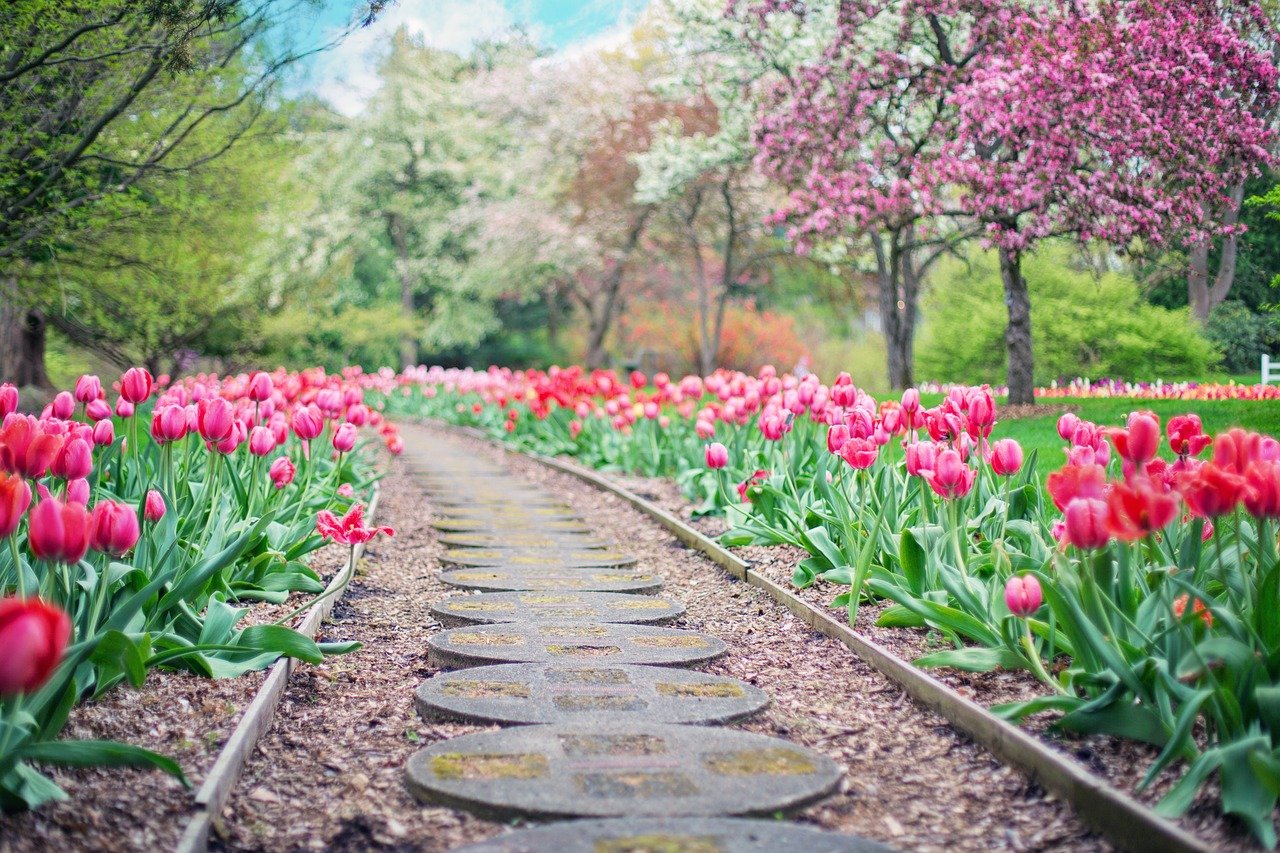
Consider the size and material of the container
The size of the container is an important consideration when choosing the right container for your plants. You’ll need to take into account the size and root structure of the plants you want to grow. Larger plants will require larger containers, while smaller plants can thrive in smaller pots.
Additionally, consider the material of the container. Some common materials for containers are clay, plastic, wood, and metal. Each material has its advantages and disadvantages. For example, clay pots are porous and allow for better airflow and drainage, but they can dry out more quickly. Plastic pots, on the other hand, retain moisture better but may not provide as much airflow.
Ensure the container has proper drainage
Proper drainage is crucial for container gardening, as it prevents water from accumulating at the bottom of the pot and causing root rot. Make sure your containers have drainage holes at the bottom to allow excess water to escape. If your container doesn’t have drainage holes, you can drill them yourself or consider using a liner or gravel at the bottom to create a makeshift drainage system.
Opt for containers with sufficient depth
Plants need enough space for their roots to grow and access essential nutrients. Choose containers with sufficient depth to accommodate the root structure of your plants. Shallow containers can restrict root growth and hinder the overall health and productivity of your plants.
Choose containers with suitable aesthetics
Container gardening can also be an opportunity to add visual appeal to your space. Consider the overall aesthetics of your outdoor or indoor area and choose containers that complement the style. There are various styles, colors, and designs available to suit your personal preferences and create an aesthetically pleasing garden.
Selecting the Ideal Location
Selecting the ideal location for your container garden is crucial to ensure the proper growth and development of your plants. Consider the following factors when choosing the location for your containers:
Assess the available sunlight in your space
Most plants require a certain amount of sunlight to thrive. Before placing your containers, assess the available sunlight in your space. Observe how much direct sunlight the area receives throughout the day and determine if it aligns with the sunlight requirements of your chosen plants. Some plants may prefer full sun, while others thrive in partial shade or shade.
Consider the proximity to water sources
Water is an essential element for plant growth, so it’s important to consider the proximity of your containers to water sources. If you have access to an outdoor water faucet, placing your containers nearby can make watering more convenient. Alternatively, you may need to plan for a watering system or ensure easy access to water for regular maintenance.
Evaluate the exposure to wind and extreme temperatures
Wind can dry out plants and cause damage, so evaluate the exposure of your chosen location to wind. Consider placing your containers in a sheltered area or providing windbreaks, such as fences or walls, if necessary.
Extreme temperatures can also affect plant health. Some plants may not tolerate frost, while others may struggle with excessive heat. Take into account the average temperature ranges in your area and choose a location that offers suitable conditions for your plants.
Preparing the Container
Before planting your desired plants, it’s important to properly prepare your containers. Preparing the container ensures a clean and healthy environment for your plants to thrive. Follow these steps to prepare your container:
Clean and disinfect the container
Start by cleaning the container thoroughly with warm water and mild soap to remove any dirt or debris. Rinse it well to ensure no soap residue remains. Once clean, disinfect the container with a 10% bleach solution or a commercial disinfectant. This step helps prevent the spread of diseases and pests that may be present in the container.
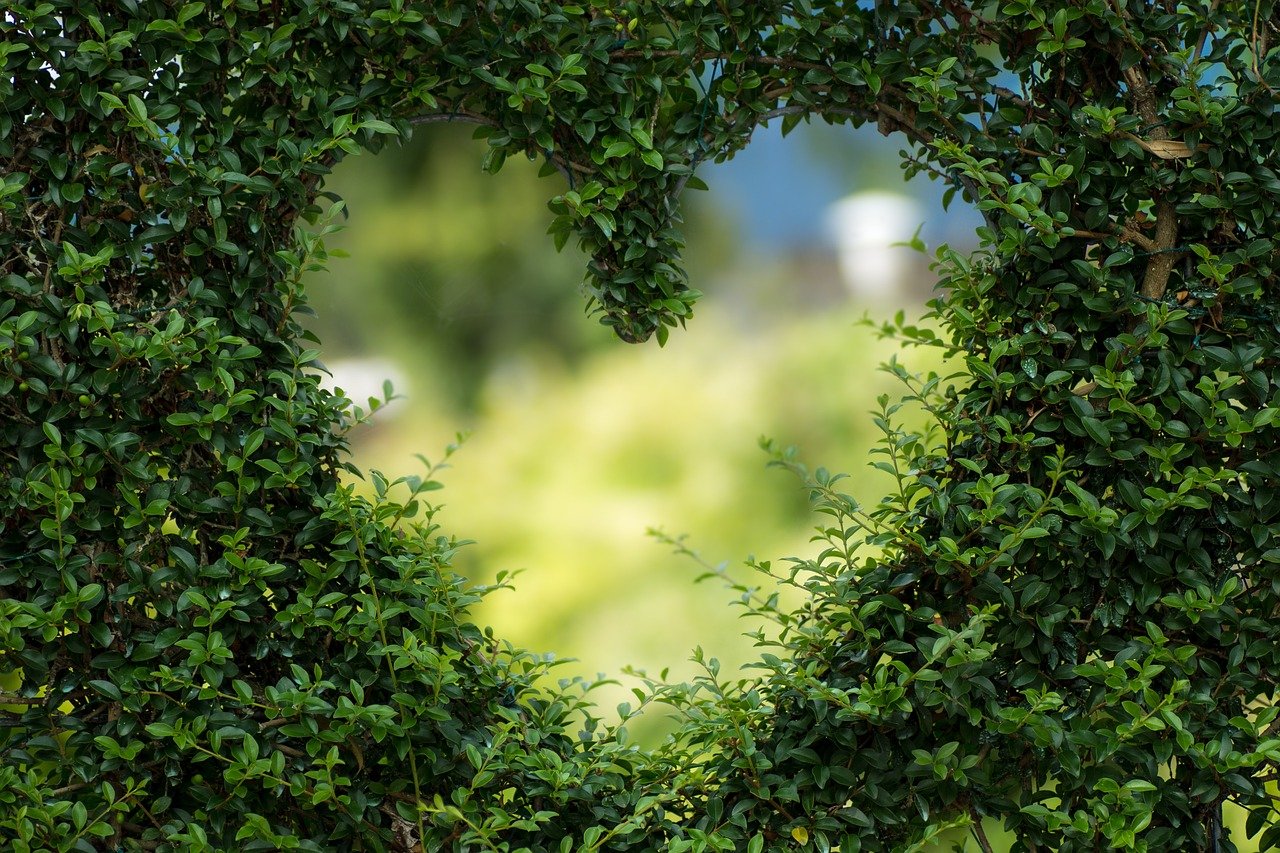
Place a layer of stones or broken pottery in the bottom
To improve drainage in your container, add a layer of small stones or broken pottery pieces at the bottom. This layer prevents water from accumulating at the roots and prevents root rot. Ensure that the layer covers the entire bottom surface of the container, but avoid filling it more than one-third of the way up.
Add a layer of well-draining potting mix
After placing the drainage layer, add a layer of well-draining potting mix on top. The potting mix should be specifically formulated for container gardening and should provide the necessary nutrients and drainage for your plants. Fill the container with potting mix, leaving enough space at the top for easy watering.
Choosing the Right Soil
The soil you use in your container garden plays a vital role in the overall health and success of your plants. Consider the following factors when choosing the right soil for your containers:
Understand the importance of soil quality
Soil quality directly affects plant growth, root development, nutrient availability, and water drainage. It’s essential to understand the value of high-quality soil for your container garden. Good soil should be well-draining, nutrient-rich, and have a suitable pH level for the chosen plants.
Use a commercial potting mix or make your own
Using a commercial potting mix is a convenient option, especially for beginners. Commercial potting mixes are specially formulated to provide optimal drainage and nutrient availability for container plants. They are usually a blend of peat moss, vermiculite or perlite, and compost.
If you prefer to make your own potting mix, ensure it includes a balance of organic matter, such as compost or well-rotted manure, and inorganic particles, such as perlite or vermiculite, for better aeration and drainage. Avoid using garden soil, as it can be too heavy and may not provide adequate drainage.

Consider the specific needs of different plants
Different plants have varying soil requirements, so consider the specific needs of the plants you want to grow. Some plants prefer acidic soil, while others thrive in alkaline conditions. Research the soil preferences of your chosen plants and adjust the pH level of the potting mix accordingly. This will ensure optimal nutrient uptake and overall plant health.
Selecting Suitable Plants
Choosing the right plants for your container garden is crucial for a thriving and aesthetically pleasing display. Consider the following factors when selecting plants:
Determine the space and size requirements of plants
Before choosing plants, consider the available space and the size requirements of the plants at maturity. Some plants, like vine vegetables, need ample vertical space, while others, like herbs or lettuces, are more suitable for compact containers.
Consider the gardening zone and climate
Different plants thrive in different gardening zones and climates. Determine your gardening zone and research plants that are suitable for your specific area. Taking into account the average temperatures, frost dates, and other climatic conditions will help you choose plants that are more likely to thrive.
Choose plants that complement each other
Aesthetics are an important aspect of container gardening, so choose plants that complement each other visually. Consider the colors, textures, and growth habits of various plants and select combinations that create a harmonious and visually appealing display.
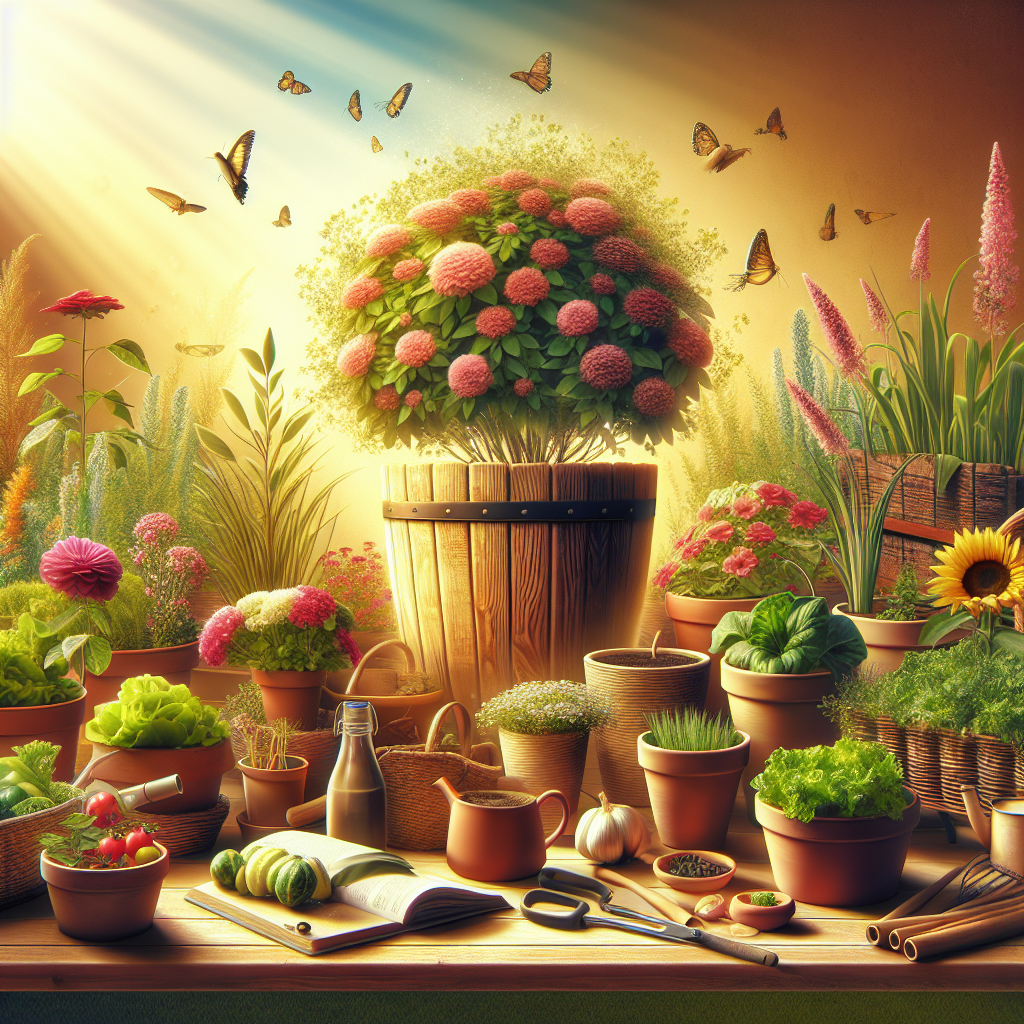
Opt for varieties that thrive in containers
Some plants are better suited for container gardening than others. Opt for varieties that have been specifically bred or recommended for container gardening. These plants are often more compact, have better adaptability to limited root space, and require less maintenance.
Watering and Fertilizing
Proper watering and fertilizing are essential for the health and growth of your container plants. Follow these guidelines for efficient watering and fertilization:
Learn the proper watering techniques
Watering frequency and amount are crucial factors when it comes to container gardening. Too much water can lead to root rot, while too little can cause drought stress. Generally, containers should be watered when the top inch of soil feels dry to the touch. Water the plants until you see water draining out of the drainage holes, ensuring that the entire root zone is adequately moistened.
Know when and how to fertilize your plants
Container plants rely on regular fertilization since nutrients in the potting mix can deplete over time. Start fertilizing your plants two to three weeks after planting and follow the instructions on the fertilizer package for the recommended amount and frequency. Avoid over-fertilizing, as it can burn the plants’ roots.
Be mindful of overwatering and under watering
Overwatering and under watering are common mistakes in container gardening. Overwatering can lead to root rot and suffocate the roots, while under watering can cause the plants to wilt and suffer from nutrient deficiencies. Monitor your plants regularly and adjust your watering practices accordingly to maintain the optimal moisture level for your plants.
Pest and Disease Management
Container gardening is not immune to pests and diseases, but there are measures you can take to minimize their impact. Follow these steps for effective pest and disease management:
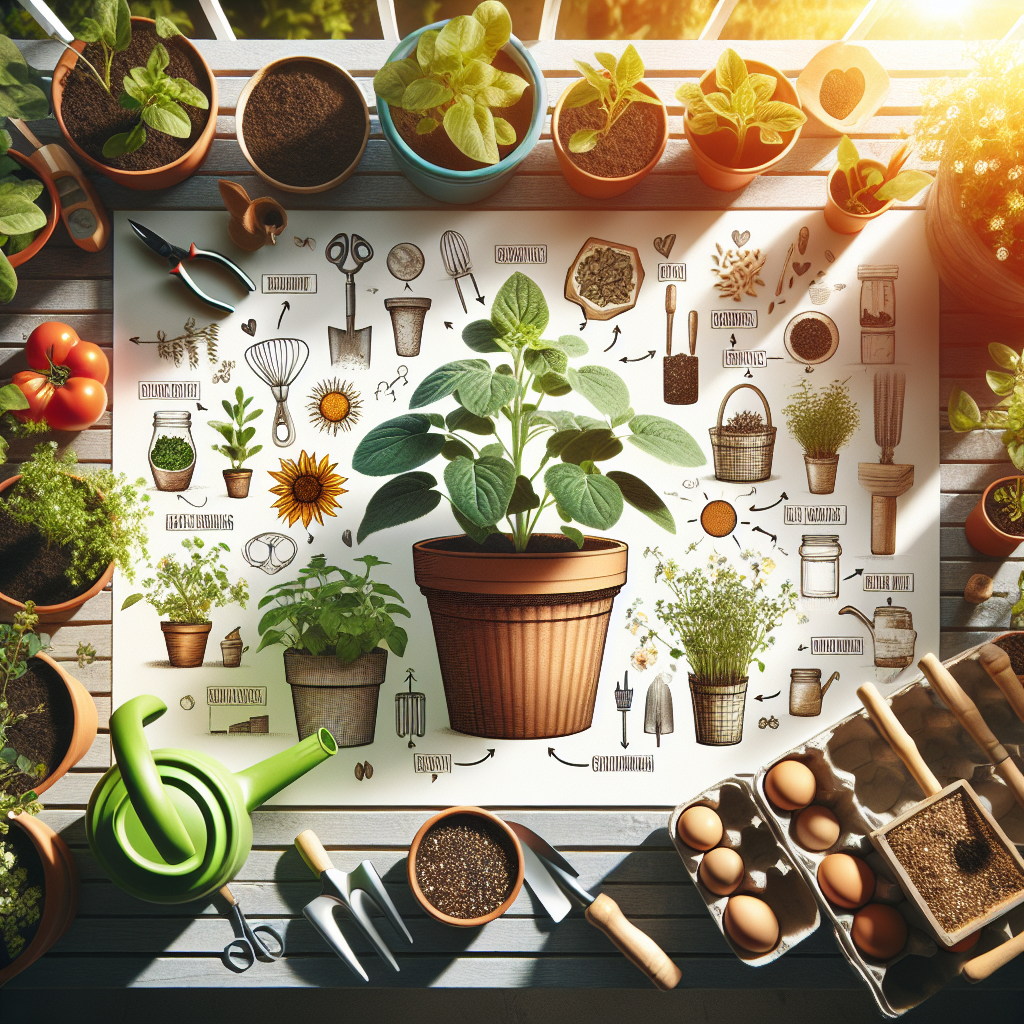
Identify common pests and diseases in container gardening
Familiarize yourself with common pests and diseases that can affect container plants. Some common pests include aphids, whiteflies, and spider mites, while diseases like powdery mildew and root rot can also occur. Recognizing the signs of infestation or infection will allow you to take the appropriate action promptly.
Implement preventive measures
Preventing pests and diseases is always better than dealing with an infestation or infection. Practice good sanitation by removing fallen leaves or debris from the containers regularly. Avoid overcrowding plants, as it can create an environment conducive to the spread of pests and diseases. Additionally, inspect new plants before introducing them to your container garden to prevent the introduction of pests or diseases.
Utilize organic and chemical treatments when necessary
If preventive measures fail, you may need to resort to treatments to control pests and diseases. Organic options include insecticidal soap, neem oil, or introducing beneficial insects. Chemical treatments should be used as a last resort and only after proper research and consideration of their potential impacts. Always follow the instructions and safety precautions provided by the manufacturer.
Pruning and Harvesting
Pruning is an important aspect of container gardening, as it helps maintain the shape, size, and health of the plants. Harvesting, on the other hand, ensures you can enjoy the rewards of your efforts. Follow these guidelines for proper pruning and harvesting:
Learn the basics of pruning container plants
Regular pruning helps control the growth and size of container plants. Remove any dead, damaged, or diseased branches or leaves to maintain plant health. Trim back excessive growth to encourage bushier and more compact growth habits. Research specific pruning techniques for the plants you’re growing, as different plants may have different requirements.
Understand the optimal time for harvesting
Harvesting at the right time ensures the best flavor, texture, and nutritional value of your crops. Research the specific harvesting timelines for the plants you’re growing, as each plant has different maturity periods. Harvest leafy greens when they reach a suitable size, root vegetables when they’re fully developed, and fruits when they’re ripe but not overripe.
Properly store and preserve harvested crops
After harvesting, proper storage and preservation techniques can help prolong the lifespan of your crops. Some vegetables, like root vegetables, can be stored in a cool, dark place for an extended period. Others, like herbs, can be dried or frozen for future use. Research the best storage methods for the specific crops you’ve harvested to maintain their quality.
Seasonal Care
Container gardening requires adjustments and care throughout different seasons to ensure optimal plant health and productivity. Consider the following seasonal care practices:
Prepare containers for winter protection
In colder climates, winter can be harsh for container plants. Before the first frost, prepare your containers for winter protection. Move frost-sensitive plants indoors or to a sheltered area. Protect container plants from freezing temperatures with insulating materials, such as bubble wrap or burlap. Reduce watering frequency during winter, as plants growth slows down.
Implement strategies for spring and summer care
As the temperatures rise in spring and summer, container plants require more attention. Increase watering frequency as the weather becomes warmer, as containers tend to dry out more quickly. Fertilize regularly during the active growing season to provide the necessary nutrients. Prune and trim as needed to maintain the desired shape and size of your plants.
Learn about the challenges and opportunities in different seasons
Each season presents its own challenges and opportunities in container gardening. Summer may require extra attention to watering and pest management, while spring offers the opportunity for new growth and vibrant blooms. Learning about the specific characteristics of each season will help you adapt your gardening practices accordingly and make the most of each season’s unique offerings.
Troubleshooting Common Issues
Even with proper care, container plants can encounter common issues that can hinder their growth and productivity. Arm yourself with knowledge on how to troubleshoot common problems:
Identify signs of nutrient deficiencies
Nutrient deficiencies can manifest in various ways, such as yellowing leaves, stunted growth, or poor flowering. Research the specific nutrient requirements of your plants and pay attention to any signs of deficiency. Adjust your fertilization routine or address any underlying soil imbalances to ensure your plants receive the necessary nutrients.
Address common problems like yellow leaves or wilting
Yellow leaves or wilting can indicate a range of issues, including overwatering, underwatering, nutrient deficiencies, or pest infestation. Assess the possible causes by examining the plant, soil, and environmental conditions. Adjust your watering practices, address nutrient deficiencies, or take appropriate measures to control pests to alleviate these common problems.
Seek solutions for plant diseases and pests
If your plants encounter diseases or pests that go beyond preventive measures, it’s important to seek solutions promptly. Research organic or chemical treatments for specific diseases or pests affecting your plants. Consult with experts or local gardening resources for guidance on the most effective solutions for your specific situation.
By following these guidelines for choosing the right containers, selecting an ideal location, preparing the containers, choosing the right soil, selecting suitable plants, watering and fertilizing properly, managing pests and diseases, pruning and harvesting correctly, taking care of seasonal needs, and troubleshooting common issues, you’ll be well on your way to a successful container garden. Container gardening allows you to grow a wide variety of plants, even in limited space, and can be a rewarding and enjoyable experience for gardeners of all levels. Happy gardening!





